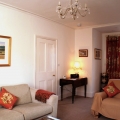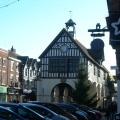Bridgnorth was the rallying point of King Henry IV’s troops before the battle of Shrewsbury:
On Wednesday next, Harry, thou shalt set forward;
On Thursday, we ourselves will march:
Our meeting is Bridgnorth; and, Harry, you
Shall march through Glostershire; by which account
Our business valued, some twelve days hence
Our general forces at Bridgnorth shall meet.
Shakespeare’s lines represent just one chapter in the long story of Bridgnorth Castle which will fascinate anyone interested in English history. The land on which Garden Cottage stands was originally within the Castle, the origins of which date back to 1101.
The unauthorised building of the Castle by the rebellious Earl of Shrewsbury was said to have been ‘the last straw’ so far as Henry I was concerned and after the Earl’s rebellion had been crushed in 1102 the King confiscated all his castles, including Bridgnorth, which then became an important royal possession throughout the middle ages. During the struggle between Henry II and Stephen, the Castle was besieged and on that occasion Hubert St Clair heroically sacrificed his life by interposing his body to receive an arrow aimed at the King from the Castle walls. King John stayed here five times and on one visit, having succumbed to the temptation to break the Friday fast, did penance by feeding a hundred paupers with bread, fish and beer! During the many wars of Edward II, the Castle changed hands more than once and the King was once forced to flee by ferry across the river at night.
Charles I was here for eight days with his two sons before the battle of Edge Hill at the opening of the Civil War in 1642 and he visited again in 1645. The following year Bridgnorth was bombarded for three weeks by the Parliamentarians, though the Castle initially remained in Royalist hands. On 7 April that year a cannon ball fired from the Castle struck St Leonard’s church at the other end of the town (in use as an ammunition dump) and much of the High Street was destroyed in the resulting fire. Eventually, on 12 September 1646, the governor, Colonel Howard, capitulated. The Parliamentarians then proceeded to demolish the Castle, save for the leaning tower. East Castle Street and West Castle Street were subsequently created, with houses being built along the street frontages in the eighteenth and nineteenth centuries.





























